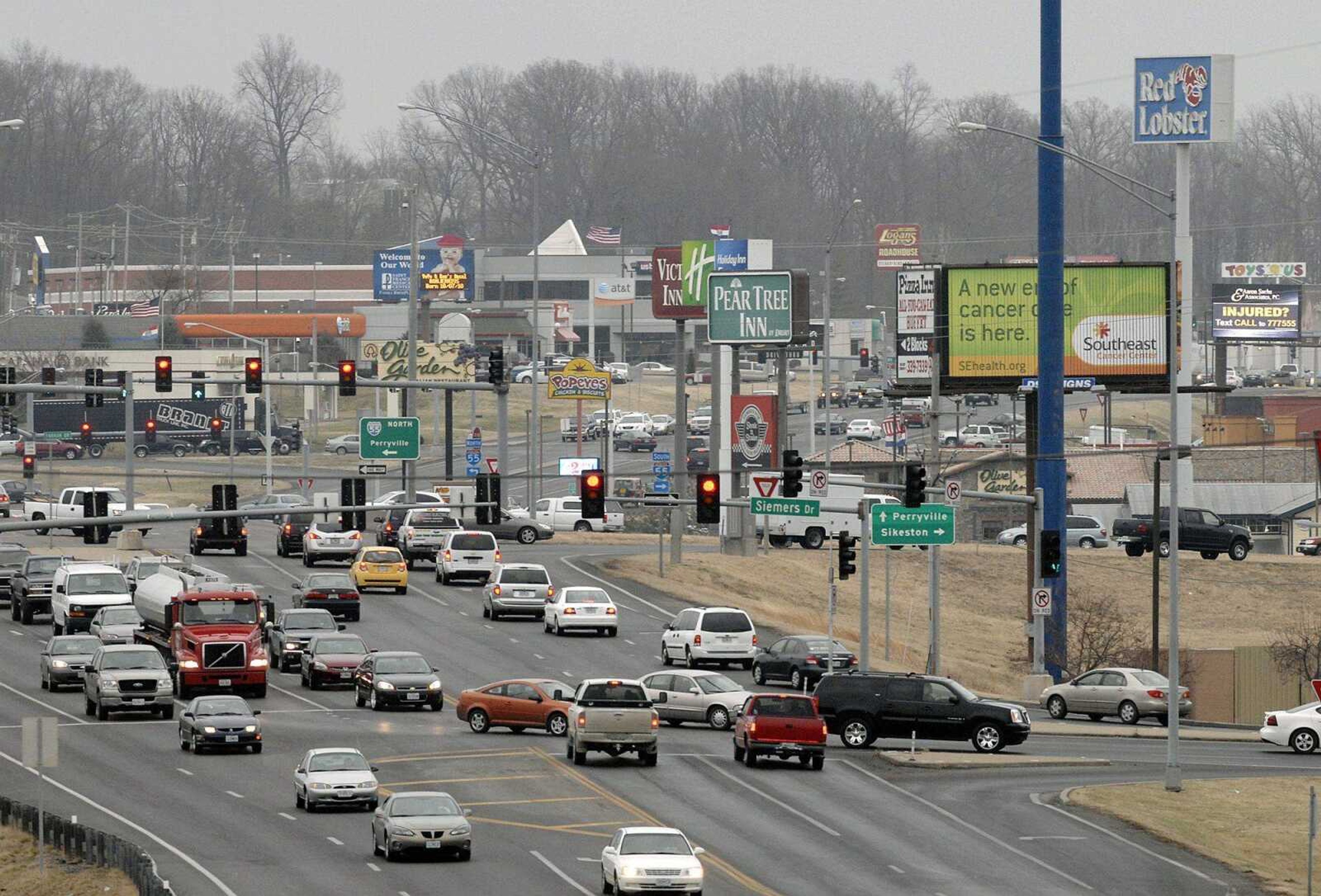Census: Cape Girardeau County, city and Jackson show large population growth
Cape Girardeau County grew by more than 10 percent over the last decade, according to Missouri population totals released Thursday from the U.S. Census Bureau.
Cape Girardeau County grew by more than 10 percent over the last decade, according to Missouri population totals released Thursday from the U.S. Census Bureau.
The latest data detail population winners and losers in Southeast Missouri, including big gains in Cape Girardeau County's fastest growing city, although not as big as expected.
The official 2010 census shows Cape Girardeau County's population was 75,674 residents as of April 2010, up from 68,693 in 2000.
Cape Girardeau's population grew by 7 percent over the last decade, from 35,349 people in 2000 to 37,941 in the 2010 census.
Mayor Harry Rediger expected a smaller increase, around 3 to 4 percent. He attributes the growth to a steady business climate and annexations over the decade, particularly in the Whispering Oaks and Dalhousie subdivisions.
"Our marching orders have been: Continue our growth, continue our search for additional industry, continue to strengthen our status as the regional hub," Rediger said.
Jackson's population soared 15 percent to 13,758 residents in 2010, up from 11,947 in 2000. Civic leaders had anticipated the population to climb above 14,000 residents over the decade, some suggesting 15,000 was in reach.
Mayor Barbara Lohr said 15,000 might have been a little too optimistic.
"I think a lot of times 15,000 is enough rooftops that more business and industry might start looking at us as a city for a place to come," she said. "But 15 percent is pretty good growth."
While Lohr said there were concerns voiced by some residents that they were not counted, the number wasn't significant enough to drastically change the census.
Jackson city administrator Jim Roach did not return a phone call seeking comment.
In Southeast Missouri, Scott County was among the bigger population losers. The county's census, at 39,191 residents, declined about 3 percent between 2000 and 2010. Scott City's headcount declined by 26 people over the decade. Its population was 4,565 residents in the 2010 census.
Sikeston's population fell 4 percent, continuing declines over the past few decades. The city of 16,318 saw an exodus of 674 people over the decade.
Ed Dust, director of the city's economic development department, said he thought the decline was going to be more severe, as steep as 1,000 people. He attributes much of the population shift to the loss of family farms and the sluggish economy. Sikeston also has eliminated several blighted homes in recent years.
"That probably moved some people around, some out of the city limits," he said.
In the 2000 census, Sikeston's population declined 3.7 percent from 17,641 residents in 1990. The Bootheel at large saw population declines between 2000 and 2010 -- Dunklin County's population dipped 3.6 percent, while New Madrid's headcount declined 4 percent and Stoddard County was down less than 1 percent. Mississippi County posted a population gain of nearly 7 percent.
Dust said events of the past have forced the hand of places like Sikeston.
"We don't have a choice but to grow," he said. "You've got to stop that exodus, provide more jobs and keep young people here. We're going to have to work harder the next 10 years to make sure we gain instead of lose."
Precisely how to do that is the million-dollar question, Dust said.
Perry County's population rose 4.6 percent to 18,971 residents, and Bollinger County gained more than 300 residents over the decade, with its population rising from 12,029 in 2000 to 12,363 in 2010.
Some of the big gains in the region included Carbondale, Ill., which saw its population soar 25 percent over the decade, from 20,681 residents in 2000 to 25,902 in the 2010 census. Farmington, Mo., posted a 17 percent increase in population, rising from 13,924 residents to 16,240.
There were 656,894 residents living in Missouri's 8th Congressional District, including Cape Girardeau in April 2010. That population is expected to grow in the months ahead. With the loss of one of Missouri's congressional districts, the target population for the eight new congressional districts will be 748,615, according to state Rep. John Diehl, R-Town and Country, who runs the House's redistricting committee.
Missouri's biggest cities, according to the census, are Kansas City, 459,787; St. Louis, 319,294; Springfield, 159,498; Independence, 116,830; and Columbia, 108,500. Kansas City grew by 4.1 percent since the 2000 census. St. Louis decreased by 8.3 percent, Springfield grew by 5.2 percent, Independence grew by 3.1 percent, and Columbia grew by 28.4 percent.
mkittle@semissourian.com
388-3627
Connect with the Southeast Missourian Newsroom:
For corrections to this story or other insights for the editor, click here. To submit a letter to the editor, click here. To learn about the Southeast Missourian’s AI Policy, click here.










